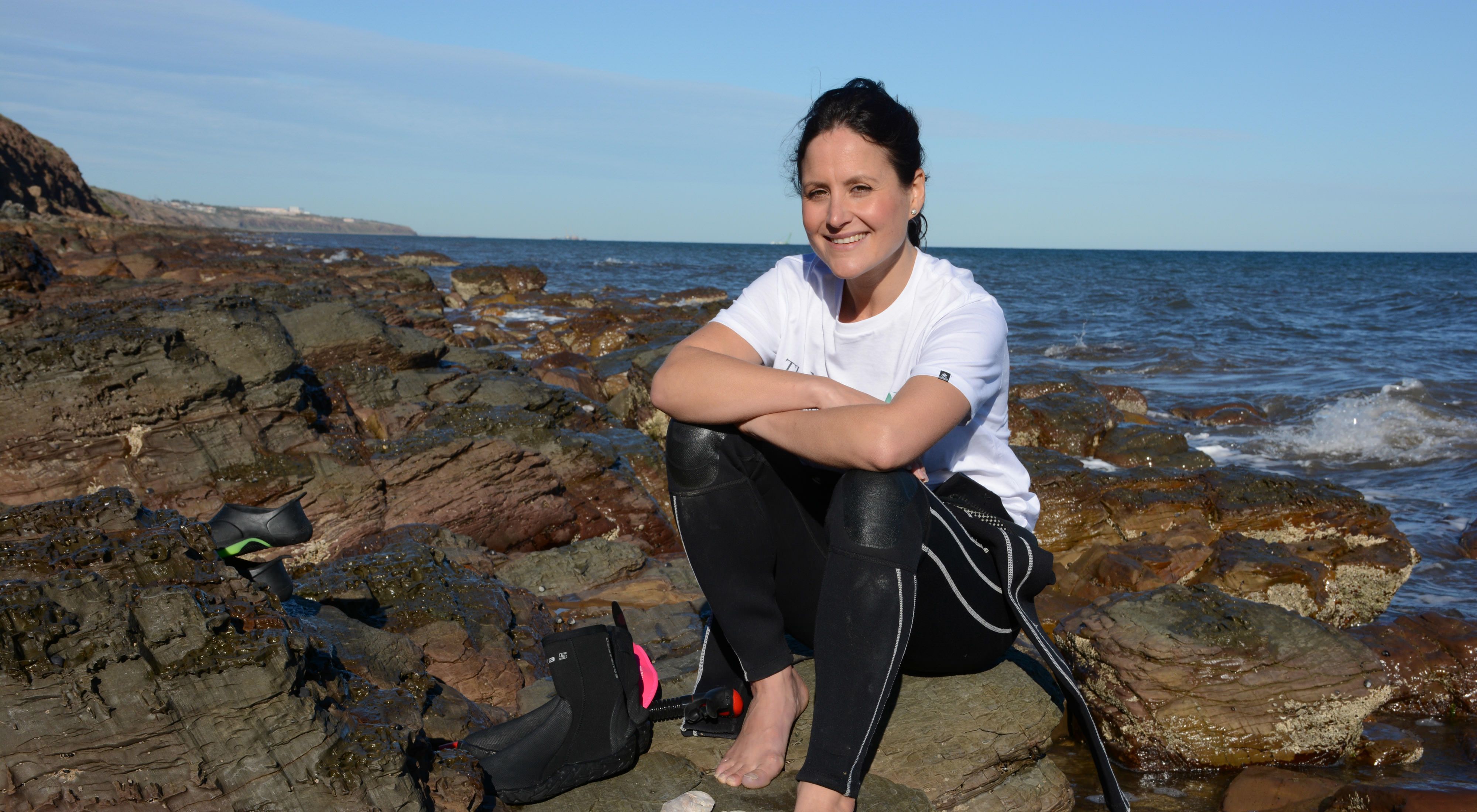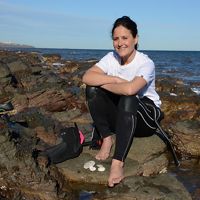Hot sunny days camping out in a wild beachside shack near Adelaide, gifted Anita Nedosyko with an idyllic upbringing. As a child, beachcombing over tidal rock pools in fascination of the creatures they contained fuelled Anita’s obsession with the beach and the ocean in general. Dodging the occasional venomous Southern Blue-ringed Octopus has a way to sharpen a child’s attention as she scrambles barefoot over rocks, shells and cool, salty puddles.
Thanks to a keen recreational fishing father, Anita remembers his on-board biology lessons fondly as part of her early fascination for marine creatures and passion for wildlife conservation in general. It’s no surprise then to learn that on leaving school she studied marine biology and environmental management. (Or, for that matter, that she now lives in a coastal ecovillage in rural Adelaide surrounded by neighbours also keen to lead a more sustainable lifestyle).
Since graduating, Anita’s career has provided her with many more wildlife experiences: “I was really fortunate to be able to work at Kakadu National Park monitoring the breeding activity of Flatback Turtles on Field Island and at Flinders University researching clownfish on the Great Barrier Reef,” recalls Anita. It was the latter experience that coincided with the worldwide phenomenon that was Finding Nemo. Despite what some see as an underlying conservation message in the movie, the animated Pixar film led to an unfortunate explosion in demand for clownfish as aquarium pets. This placed unsustainable pressure on wild clownfish and other coral reef species as they were captured to supply wild-caught fish for the pet trade. Wanting to address this sorry situation, Anita helped form the Saving Nemo Conservation Fund – a not-for-profit program at the university educating the community about the marine aquarium fish trade. The Fund also importantly established a clownfish breeding program to supply nursery-bred fish to reduce demand on their wild-caught cousins.
And so, unsurprisingly, it would be another marine experience that would change Anita’s career direction to focus on a threatened southern reef species this time. In 2016, she attended a coral reef conference in Hawaii and first heard about The Nature Conservancy (TNC). “I was captivated by TNC’s conservation successes by working with communities to resolve complex conservation challenges and immediately Googled the organisation to find out more. It makes sense and it’s why I love our ‘Nature Needs People’ mantra. Nature is facing complex challenges around the world and it’s only through collaboration that we can hope to rise to them,” said Anita.

Later in 2016, Anita was fortunate to become part of The Nature Conservancy team as the Marine Restoration Coordinator in South Australia. “I am just so lucky to be working on such a collaborative project that is creating a significant legacy right here in Adelaide’s backyard, restoring the lost shellfish reefs of Gulf St Vincent. It’s my idea of the perfect job – science-based, high levels of community engagement, project management, plenty of travel and of course the ocean”. And on the subject of going from charismatic clownfish to the humble oyster? ”I am now obsessed with oysters and the extraordinary list of benefits they provide for people plus, like clownfish, I seem to gravitate towards conserving sex-changing marine species.”
So what’s it like to work in the male-dominated world of science? “I actually find there’s quite a lot of women in science but notoriously few in senior leadership roles. It is refreshing that the shellfish restoration project I am working on defies this – there are quite a few senior women leading this initiative,” reflects Anita. “I think the expectations of women entering executive positions need to change to allow gender equity which is not necessarily the same thing as equality. Certain aspects of working at The Nature Conservancy are helping to achieve this such as the flexibility to work unconventional hours so that women can juggle family and other commitments, as well as our first rate diversity and inclusion programs.
“I’m really looking forward to a long career at TNC, making sure the kinds of childhood experiences I enjoyed growing up like fishing and reef exploring can be just as formative for our future scientists – girls and boys – as they were for me."
Read more
-
Anita Nedosyko
Marine Restoration Coordinator in for The Nature Conservancy in South Australia Read her biography.

